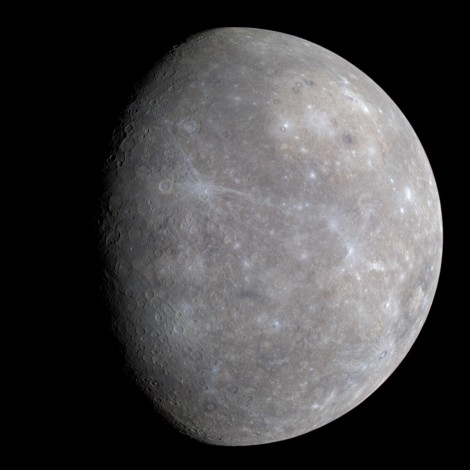
Mercury Will Pass Across the Face of the Sun on May 9, 2016
Two Public Viewing Events Available for Rare Astronomical Event
DELAWARE, Ohio – For roughly seven hours and thirty minutes on Monday, May 9, the planet Mercury will pass across the face of the Sun. Miss the event, called a transit, says Tom Burns of Ohio Wesleyan University’s Perkins Observatory, and you’ll have to wait until Nov. 11, 2019, for another opportunity.
“If we factor in the cloudiness of central Ohio, even a more-frequent Mercury transit can be one of those once-in-a-lifetime experiences that astronerds are always talking about,” said Burns, director of the observatory. “I’ve been observing the sky for half a century, and if the weather permits, I will be seeing only my second transit of Mercury.”
The May 9 Mercury transit will begin at about 7:12 a.m. and end at about 2:42 p.m. Mid-transit will occur at about 10:57 a.m. To ensure the safety of your eyes, Burns stressed, you will need special equipment to observe the transit. Eclipse glasses will not enable you to observe the rare event, he said.
“Mercury is far too small to be seen with eclipse glasses,” Burns said. “You will need a specially designed solar-safe telescope.”
Just in case you don’t own a solar-safe telescope, Perkins Observatory and the Columbus Astronomical society will host two public viewing events. The first will begin at 11 a.m. May 9 at Homestead Park, 4675 Cosgray Road in Hilliard. Visit http://columbusastronomy.org for more details.
A second observing session will be held from 7 a.m. to 2:42 p.m. at the Delaware State Park dam embankment at 3920 U.S. Highway 23 North, north of Delaware.
A transit occurs, Burns said, when a planet passes between the Earth and Sun. Only Venus and Mercury can transit the Sun from an earthly vantage point because they are the only planets that travel inside Earth’s orbit.
Transits of Mercury occur only 13 times every century, and transits of Venus are far more rare, Burns said. Only eight of them have occurred since the first use of telescopes for astronomy in 1609. The next transit of Venus won’t happen until 2117.
Although it will be tempting, Burn said, it is critical that viewers not look at the sun in any way or at any time without specially designed solar-safe equipment. See http://perkins.owu.edu/solar_viewing_safety.htm for information on how to safely view the Sun and avoid eye damage.
Founded in 1842, Ohio Wesleyan University is one of the nation’s premier liberal arts universities. Located in Delaware, Ohio, the private university offers 87 undergraduate majors and competes in 23 NCAA Division III varsity sports. Ohio Wesleyan combines a challenging, internationally focused curriculum with off-campus learning and leadership opportunities to connect classroom theory with real-world experience. OWU’s 1,675 students represent 43 U.S. states and territories and 33 countries. Ohio Wesleyan is featured in the book “Colleges That Change Lives,” listed on the latest President’s Higher Education Community Service Honor Roll with Distinction, and included in the U.S. News & World Report and Princeton Review “best colleges” lists. Learn more at www.owu.edu.
